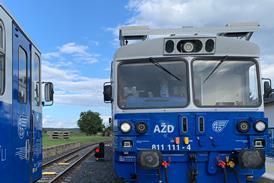Close menu
- Home
-
News
- Back to parent navigation item
- News
- Traction and rolling stock
- Passenger
- High speed
- Freight
- Infrastructure
- Policy
- Technology
- Ticketing
- Business
- Research, training and skills
- Accessibility and inclusion
- People
- Urban rail news
- Suburban and commuter rail
- Metro
- Light rail and tram
- Monorail and peoplemover
- Regions
- InnoTrans
- In depth
- Events
- Data
- Maps
- Tenders & Jobs
- Sponsored content
- Insights
Carrot or stick?
By Railway Gazette International and Chris Jackson2007-06-01T10:00:00
IN THIS ERA of growing awareness of energy use and the quality of urban life, many cities are looking to shift the balance between private and public transport.
Already have an account? LOG IN
To continue…
You’ve reached your limit of content for the month














